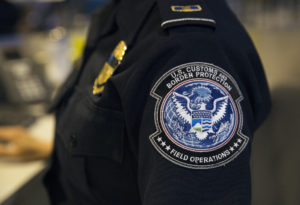American Civil Liberties Union Forces U.S. to Release Secret Drone Playbook
The long-awaited release of the guidelines provide "a timely reminder of the breadth of the powers that will soon be in the hands of another president," an ACLU spokesman said. An MQ-9 Reaper unmanned aerial vehicle prepares to land after a 2007 mission in Afghanistan. (Staff Sgt. Brian Ferguson / U.S. Air Force)
An MQ-9 Reaper unmanned aerial vehicle prepares to land after a 2007 mission in Afghanistan. (Staff Sgt. Brian Ferguson / U.S. Air Force)
By Lauren McCauley / Common Dreams
An MQ-9 Reaper unmanned aerial vehicle prepares to land after a 2007 mission in Afghanistan. (Staff Sgt. Brian Ferguson / U.S. Air Force)
Three years and thousands of deaths later, the administration of U.S. President Barack Obama late Friday finally made public its guidelines for conducting lethal drone strikes.
The release of the Presidential Policy Guidance (PPG), also known as “the Playbook,” came in response to a lawsuit filed last year by the American Civil Liberties Union (ACLU) seeking the framework—which Obama said at the time was created in the interest of greater transparency and oversight over the expansive targeted killing program.
“For the same human progress that gives us the technology to strike half a world away also demands the discipline to constrain that power—or risk abusing it,” the president declared in May 2013 during a landmark foreign policy speech at National Defense University.
Now, three years after that address, the redacted PPG finally provides the rights group with “crucial information about policies that have resulted in the deaths of thousands of people, including hundreds of non-combatants, and about the bureaucracy that the Obama administration has constructed to oversee and implement those policies,” said ACLU deputy legal director Jameel Jaffer in a statement on Saturday.
The long-awaited release will serve to “inform an ongoing debate about the lawfulness and wisdom of the government’s counterterrorism policies.” Further, coming amid the 2016 presidential election, the documents are “a timely reminder of the breadth of the powers that will soon be in the hands of another president,” Jaffer added.
In addition to the redacted PPG, the administration also provided the ACLU with four additional Defense Department documents related to the drone program and the process for determining targets of lethal or capture operations.
The ACLU said that while the documents provide a “window” into the government’s process of targeting individuals, questions still remain about “where the PPG applies, whether the president has waived its requirements in particular instances, and how the PPG’s relatively stringent standards can be reconciled with the accounts of eye witnesses, journalists, and human rights researches who have documented large numbers of bystander casualties.”
Lethal drones strikes, often with civilian casualties, have been reported in Pakistan, Yemen, Somalia, Afghanistan, Syria, Iraq, and Libya.
The playbook comes less than a week after the U.S.-led coalition officially expanded its military campaign against the Islamic State (ISIS), including lethal drone strikes, to Libya. It also comes after what transparency group Airwars estimates was the deadliest month for civilians in Syria as a result of coalition bombings.
Last month, the White House reported that since 2009 U.S. drone strikes have killed between 64 and 116 civilians in areas outside of active hostilities, which was far lower than the 380 to 801 recorded by the UK-based Bureau of Investigative Journalism.
Your support matters…Independent journalism is under threat and overshadowed by heavily funded mainstream media.
You can help level the playing field. Become a member.
Your tax-deductible contribution keeps us digging beneath the headlines to give you thought-provoking, investigative reporting and analysis that unearths what's really happening- without compromise.
Give today to support our courageous, independent journalists.






You need to be a supporter to comment.
There are currently no responses to this article.
Be the first to respond.